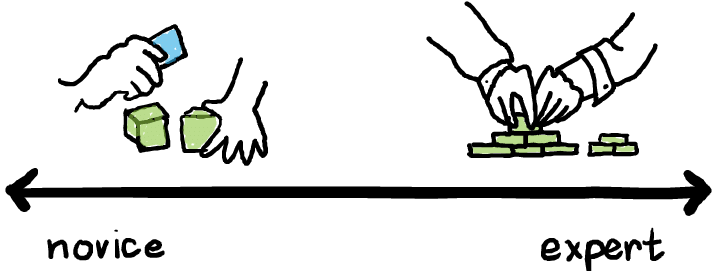
The day is 28th March 2022, and this writer has just received a call from an architect, notifying him of a mail sent to him containing the complete architectural drawings and site investigation report of a newly proposed B+G+5 storey building. The job is a matter of urgency: “This drawing must go for approval in 4 days’ time.” said the architect. This meant that, this writer had only 72 hours to work through the processes of producing a scheme design, carry out the detailed design and then produce full structural engineering drawings and reports.
The proposed building is mixed use with 7 levels, covering an area of 3500m2 approx. The basement level is mostly composed of car parking spaces while the remaining space is a storage area for an anchor tenant store. From the ground floor up to the 4th floor are shopping malls, office spaces and storage areas while the 5th floor consists of just residential apartments.
Without further delay, this writer proceeds with the scheme design, it took roughly 5 hours to select a scheme and resolve the structural arrangement. Since there was almost no restriction on spanning, the scheme design called for a 150-200mm thick reinforced concrete solid slabs on concrete beams of (225mm x 450mm – 350mm x 750mm). Concrete columns sizes ranged between (450x450mm – 600x600mm, 450mm-600mm dia).
The site investigation report indicated that, although the ground conditions is relatively good, a beam strip raft would be the preferred solution, consequence of the structure’s mass. Hence, as part of the scheme design, this writer also carried out calculations to check the bearing pressures as well as pre-set the sizes of the foundation elements. Having completed the scheme design, all that was left was to begin the detailed design using a software package to automate the process.
Modelling, Analysis and Design took another 4 hours to complete, many of the structural elements as selected in the scheme design passed the design requirements and those with problems were resolved through interactive design. Once, all issues were resolved, this writer proceeded with producing the structural engineering drawings and reports and after another 48 hours the job has been completed and ready for submission. This writer then sends the draft drawing and report to a colleague to conduct a very brief review after which the final copy was submitted to the architect.
To be very honest, this would be amongst one of the fastest works, if not even the fastest work ever completed by this writer, considering the size of the project. The time limit meant that he had to discard an aspect of the design process personal to him. Usually, his final check involved carrying out hand calculations to confirm all critical aspect of the design. On this project, this was ditched or maybe abdicated to someone else. Even though, this writer was confident in his design, he was also aware that it could contain some errors, albeit not the kind of design errors he would come to discover when he set out to critically interrogate the structural drawing two days after. The error was gross!
This writer got it all wrong at the very beginning. He had erroneously deleted a load combination that was very critical to the design of several structural elements. Readers familiar with design to the Eurocodes would recognize that there are two alternative equations for estimating the design action on structures. Eqn 6.10 or the more onerous of 6.10a &b of BS EN 1990. The latter is generally considered less conservative and economical; hence many designers take advantage of this. Equation 6.10b employs a reduction factor on permanent actions and is typically the more onerous combination, for as long as the permanent actions are less than 4.5times the variable actions. This condition is readily satisfied for most structures save for where storage loads are considered. Recall, the proposed building had storage areas on four levels. Deleting eqn 6.10a and utilizing only 6.10b undermined the design action for the storage panels, consequently would lead to undersized structural elements in the storage spaces. In-fact, there was a 12% surge in the soil pressures, consequently increasing the raft slab thickness from the earlier proposed 250mm to 275mm with slightly more higher rebars.
It’s not exactly out of place to blame this error on the speed with which this work was completed, however it would be misleading to do so. The real culprit here, is “implicit assumptions.” An implicit assumption is an assumption that underlies a logical argument, course of action, decision or judgement that is not explicitly voiced nor necessarily understood by the decision maker1. In other words, implicit assumptions are those assumptions we make without even realizing it, hence they may go undetected.
To understand how implicit assumptions played the biggest role in causing this design error, we have to explore the stark differences that exist between the expertise of an expert and that of a novice.
Implicit Assumptions & Expertise
While experts tend to have a larger, interconnected and well organized, representation of things that guide their individual thought process, and also possess far greater knowledge in specific domains, the novice expertise on the flip side is contrastive. The novice has far less organized knowledge than the expert and they are seldom interconnected. And because the novice expertise contains less schemata, they possess less pattern recognition ability, than the experts. It’s often this pattern recognition ability that gives an expert an edge over the novice.

This view is corroborated in a research conducted on chess players by (de Groot, 1965)2. De Groot put together a team of chess novices and experts and subjected them to a test. Using actual positions in a chess game, he allowed each player to view the chess board for 5 seconds, after which the players were asked to reposition the pieces on the board from memory. Guess who performed better? Of course, the experts! While one might be tempted to attribute the expert’s success to a superior memory ability, since it’s often believed to be one of the key attributes of a very good chess player, the next experiment conducted by de Groot confirmed otherwise.
The next experiment saw de Groot place the pieces randomly on the chess board rather than use chess positions from actual games. In this scenario, the earlier advantage the experts had over the novice suddenly vanished and the experts were only slightly better. Why was this the case? The answer is not far-fetched. In the first experiment, the position of the pieces was very consistent with the expert’s expertise. Hence, whilst the novices had a much more difficult task having to recall the location of each piece on the chess board the experts only had to recognize and remember the pattern of the pieces. However, in the second experiment, once these familiar patterns were removed, the experts became novices and were forced to count on recalling the position of each piece.
Thus, one of the most key difference between an expert’s expertise and the novice expertise is the ability to see and recognize patterns because the patterns are consistent with a set of attributes and linkages within their expertise.
Downsides of Expertise
It is not up for debate that possessing expertise has many advantages, almost all profession including structural engineering demands a high level of expertise to get job done2. However, it would seem that possessing expertise also have a downside. Perhaps our primary source of strength might as well be our biggest source of weakness. We’ve seen that, when an expert gain expertise, their schema, attributes as well as the linkages gain stability. However, this stability leads to inflexibility and cognitive entrenchment2.
The downside of expertise readily comes to bare when the supposed expert is faced with situations, though similar but slightly different from the practice as was the case of this writer who deleted the second load combination. He was already so used to applying eqn 6.10b that he didn’t consider the possibility of eqn 6.10a becoming more onerous. It simply wasn’t consistent with any existing pattern. We see the same thing with the chess players, it was still chess albeit without the familiar patterns. Without familiar patterns an expert is only applying an inappropriate solution to a problem. The issue is even more problematic because in most instances the expert is not even aware of this mistake.
Thus, the application of expertise is often based on assumptions which are usually performed automatically and subconsciously. By definition, they’re implicit and since they’re implicit, they escape critical examination.
Implicit Assumptions & Structural Failure
It can be argued that in many cases of catastrophic failures triggered by human error, the role of implicit assumption is always present. Recall the infamous story of the Quebec bridge and its designer Theodore Cooper. We see the role played by implicit assumption when Theodore Cooper “an expert” chose to increase the bridge span and the working stresses, in the face of self-weight miscalculation without the notice of anyone. The reputation of the designer ensured that even when he rejected the decision for his design to be subjected to a peer review, he was met with no resistance. “The bridge was obviously designed by one of the finest bridge engineers; hence it was okay to assume nothing could go wrong.”
The Citicorp centre is another stark example of implicit assumption at play, even though in this case the design error was rectified before it became catastrophic. The building design was very unique and quite unusual, it had columns in the centre of the spans and utilized a very novel bracing system. The tower designer William LeMesseurier had assumed that the effects of quartering winds were less significant compared to wind acting perpendicular to the building. While this assumption was mostly correct for many conventional structures, it was inappropriate for this structure due to the decision to use a novel bracing system. The effect of Quartering wind was more significant in this structure, hence compromised the structural integrity of the structure.
This particular example shows how difficult it is to discover an implicit assumption as it went unchecked until a year after the structure was completed.
Conclusion
Structural engineering, like any other professions need experts, but experts are susceptible to implicit assumptions which in turn fetters deeper or original thought. We must strive to combat the problem of implicit assumptions. Here are some checklists:
- Scrutinize your work
- Subject your work to independent review and make sure the review person doesn’t have the exact experience or background as you.
- Throw in someone completely indifferent into the problem.
Sources & Citation
- Wikipedia (2017) ‘Tacit Assumptions’, www.wikipedia.com
- Brady S. (2015) ‘Implicit Assumptions: The Designer’s Achilles Heel’, The Structural Engineer, 93 (1), pp. 35–37
- Susan S. (2020) ‘Implicit Assumptions: experts aren’t always expert’s’, www.susan365.medium.com
- de Groot A. (1965) ‘Thought and Choice in Chess (2nd ed.)’ The Hague: Mouton Publishers.
Thank You!